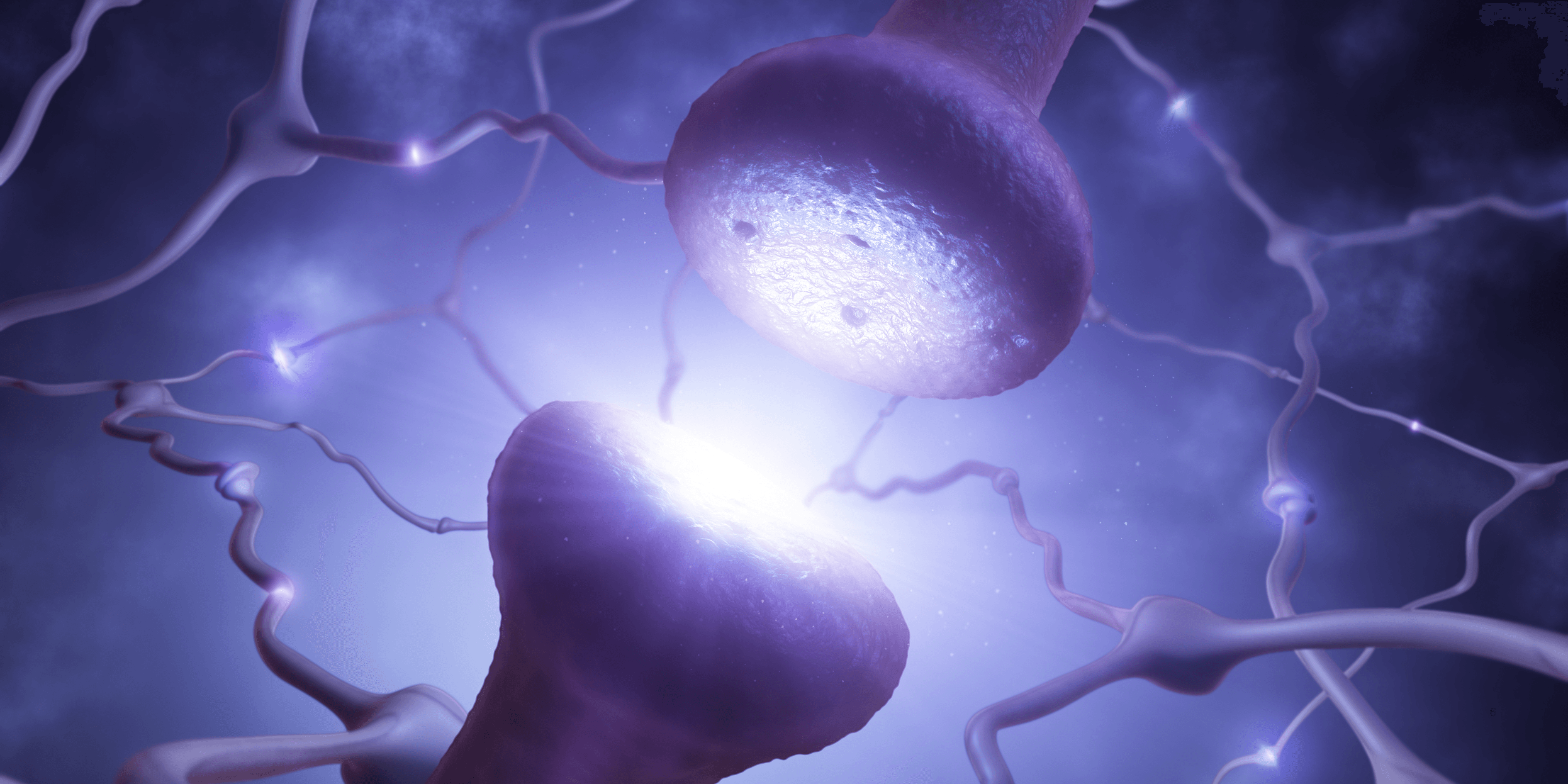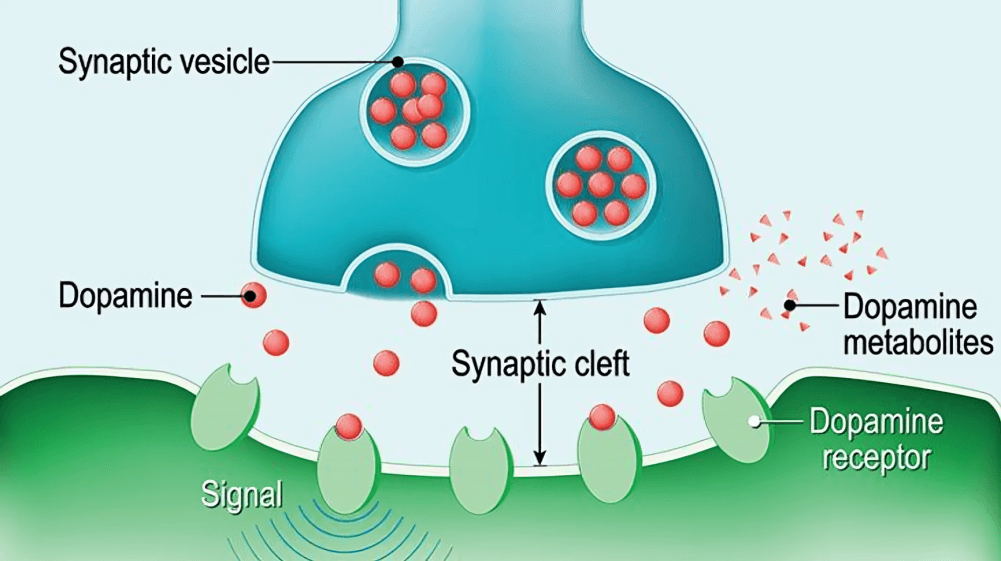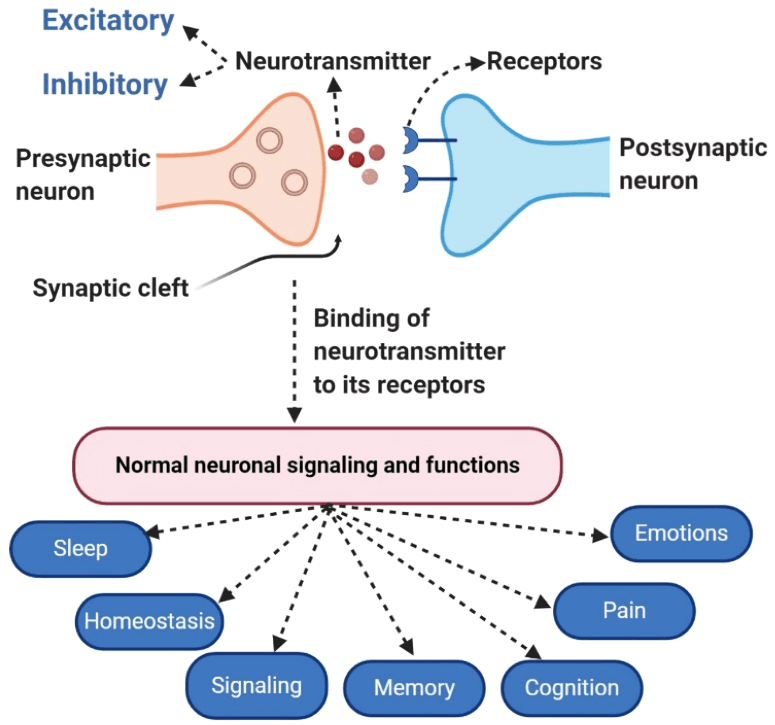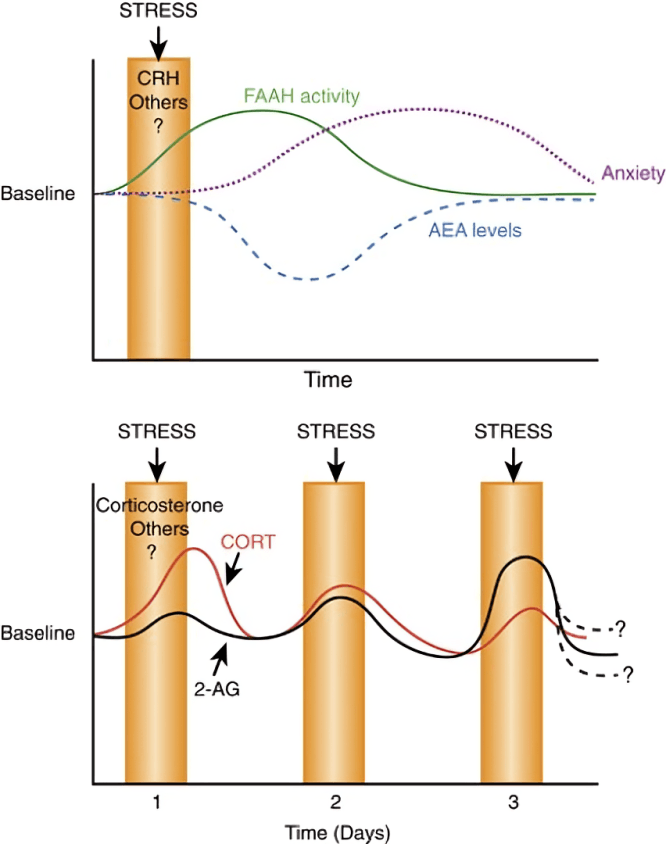
“
Neurotransmitters and their functions are at the heart of how the brain and nervous system operate. These powerful chemical messengers enable communication between neurons and influence nearly every aspect of human behavior—from mood and memory to breathing and heart rate. 1
1
”
Neurotransmitters are released from synaptic vesicles in the axon terminals of neurons and travel across the synaptic cleft to bind to receptors on the next neuron, continuing the signal’s journey. 1
Acetylcholine is the first neurotransmitter discovered and plays a key role in muscle movement, learning, and memory, making it essential for both voluntary action and cognitive brain functions. 2

Dopamine acts as the brain's reward chemical, deeply involved in pleasure, motivation, and motor control; low levels are linked to depression, while excessive amounts can trigger psychotic symptoms.
Serotonin influences mood, sleep, appetite, and even gut function; many antidepressants increase its levels in the brain to improve emotional balance and mental stability in depressive disorders. 3
Gamma-aminobutyric acid (GABA) is the brain’s chief inhibitory neurotransmitter, calming overactive neural activity, promoting relaxation, and helping prevent seizures or anxiety-related disruptions in brain function. 4
Norepinephrine helps the brain respond to stress by increasing alertness and heart rate; it prepares the body for action and plays a key role in attention, arousal, and blood pressure regulation. 5
Endorphins are natural painkillers released during stress or exercise; they bind to opioid receptors in the brain, reducing pain and enhancing a sense of well-being or euphoria known as the “runner’s high.” 6
Oxytocin, often called the “love hormone,” influences social bonding, trust, and maternal behaviors; its release during physical touch or childbirth highlights its role in emotional and reproductive functions. 7
Histamine is not just involved in immune responses—it also acts as a neurotransmitter regulating sleep, wakefulness, appetite, and cognitive functions, especially in the hypothalamus and brainstem. 8

The balance of excitatory and inhibitory neurotransmitters ensures the brain remains stable—too much stimulation or inhibition can lead to seizures, mood disorders, or neurodegenerative diseases.
Neurotransmitters are stored in vesicles within axon terminals and released in precise amounts; any imbalance in this release system can affect thought patterns, muscle control, or emotional regulation. 9
The enzyme monoamine oxidase (MAO) breaks down neurotransmitters like dopamine; MAO inhibitors (MAOIs) are used in psychiatry to increase neurotransmitter levels in anxiety treatment. 10
Some neurotransmitters can act in both excitatory and inhibitory roles depending on the type of receptor they bind to—such versatility adds complexity to how brain signals are interpreted and acted upon. 11
Neurotransmitter pathways are highly specialized: dopamine neurons, for example, originate in specific midbrain regions and project to reward- or motor-related areas, determining their functional effects.12
Epinephrine, or adrenaline, functions both as a hormone and neurotransmitter; in the brain, it sharpens focus and stress response, while in the body, it activates the fight-or-flight reaction to danger. 13

Neuromodulators like endocannabinoids don’t carry direct signals but alter the strength or duration of neurotransmitter activity, regulating appetite, anxiety, and even memory processing.
Reuptake is the process where neurotransmitters are reabsorbed by the sending neuron after transmitting a signal—many antidepressants block this process to increase neurotransmitter levels in the synapse. 14
Some psychiatric and neurological conditions—like Parkinson’s, Alzheimer’s, and schizophrenia—are strongly linked to disruptions in neurotransmitter production, release, or receptor sensitivity.15
Receptors for neurotransmitters can be ionotropic (fast-acting) or metabotropic (slower and longer-lasting), offering multiple layers of control over how messages are transmitted within the nervous system. 16
Arabic philosopher Avicenna described “vital spirits” in the brain guiding emotions and actions, anticipating modern ideas of neurotransmission long before these brain chemicals were scientifically observed.17


